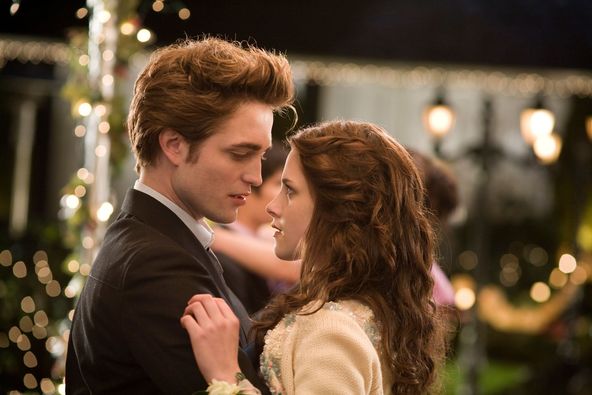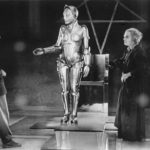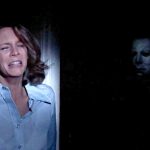The Twilight saga (2008-2012)

The Twilight Saga, a film series based on the popular novels by Stephenie Meyer, was released between 2008 and 2012 and became a significant cultural phenomenon. Comprising five films—Twilight (2008), The Twilight Saga: New Moon (2009), The Twilight Saga: Eclipse (2010), The Twilight Saga: Breaking Dawn – Part 1 (2011), and The Twilight Saga: Breaking Dawn – Part 2 (2012)—the series explores themes of love, immortality, and the supernatural through the lens of a young adult romance. Directed by Catherine Hardwicke, Chris Weitz, David Slade, and Bill Condon, the saga has had a profound impact on popular culture and the fantasy genre.
The narrative of The Twilight Saga centers on Bella Swan (Kristen Stewart), a teenage girl who moves to the small town of Forks, Washington, and finds herself entangled in a love triangle involving a vampire, Edward Cullen (Robert Pattinson), and a werewolf, Jacob Black (Taylor Lautner). The saga begins with Bella’s introduction to the mysterious Cullen family and their supernatural existence, leading to a complex and evolving relationship with Edward. As the story progresses, Bella becomes deeply involved in the world of vampires and werewolves, facing various challenges and conflicts that test her loyalty and love.
Kristen Stewart’s portrayal of Bella Swan is central to the film series. Stewart’s performance captures Bella’s introspection and vulnerability, portraying her as a relatable and emotionally complex character. Bella’s journey from an ordinary high school student to a central figure in a supernatural conflict is portrayed with nuance and depth. Stewart’s portrayal effectively conveys Bella’s internal struggles and her evolving relationships with Edward and Jacob.

Robert Pattinson’s portrayal of Edward Cullen adds a brooding and enigmatic quality to the series. Edward, as a vampire with a deep sense of moral responsibility, is depicted as both romantic and conflicted. Pattinson’s performance captures the character’s internal conflict between his vampire nature and his love for Bella, contributing to the romantic tension that drives the narrative. His portrayal adds a layer of complexity to the character, making Edward both captivating and enigmatic.
Taylor Lautner’s portrayal of Jacob Black is another key element of the series. Jacob’s character serves as both a rival and a friend to Edward, and his transformation into a werewolf adds another dimension to the love triangle. Lautner’s performance brings a sense of warmth and loyalty to Jacob, contrasting with Edward’s more brooding nature. Jacob’s role in the series explores themes of friendship, loyalty, and the conflicts that arise from supernatural differences.
The direction of the films varies across the different installments, with Catherine Hardwicke, Chris Weitz, David Slade, and Bill Condon each bringing their unique styles to the series. Hardwicke’s direction in Twilight establishes the atmospheric and emotional tone of the saga, focusing on the romantic and supernatural elements. Weitz’s direction in New Moon emphasizes the emotional fallout of Bella’s separation from Edward, while Slade’s Eclipse introduces darker and more intense themes as the story progresses. Condon’s direction in Breaking Dawn – Part 1 and Part 2 focuses on the culmination of Bella’s journey, balancing romance, drama, and action.

The visual and special effects in The Twilight Saga play a significant role in bringing the supernatural elements to life. The depiction of vampires and werewolves is achieved through a combination of practical effects and CGI, creating visually striking representations of these mythical creatures. The film series is known for its ethereal and often somber visual style, with an emphasis on moody landscapes and atmospheric lighting that enhance the supernatural ambiance.
The music of The Twilight Saga also contributes to its cultural impact. The soundtracks, which feature a mix of indie and alternative music, have been praised for their ability to capture the emotional tone of the films. Songs by artists such as Muse, Paramore, and Florence + the Machine add to the series’ romantic and dramatic atmosphere, resonating with fans and contributing to the films’ overall appeal.
The impact of The Twilight Saga on popular culture and the fantasy genre is significant. The series played a crucial role in popularizing young adult fantasy and supernatural romance, influencing a wave of similar films and television shows. The portrayal of vampires and werewolves in The Twilight Saga contributed to the revival of these mythical creatures in modern media, inspiring a new generation of fantasy enthusiasts.

Despite its cultural success, The Twilight Saga has faced criticism. Some critics argue that the series’ portrayal of romance and relationships is problematic, citing concerns about the nature of Bella’s relationships with Edward and Jacob. Additionally, the films have been criticized for their pacing and dialogue, with some viewing them as melodramatic or formulaic. However, these criticisms have not significantly diminished the series’ popularity or its impact on fans.
In conclusion, The Twilight Saga (2008–2012) is a culturally significant film series that explores themes of love, immortality, and the supernatural through its portrayal of a young adult romance. Through the performances of Kristen Stewart, Robert Pattinson, and Taylor Lautner, as well as the direction of Catherine Hardwicke, Chris Weitz, David Slade, and Bill Condon, the series delivers a compelling and emotionally resonant narrative. The film series’ impact on popular culture and the fantasy genre is notable, reflecting its ability to captivate audiences and inspire a new wave of supernatural storytelling. The Twilight Saga remains a defining work in the genre, celebrated for its exploration of romance and the supernatural.










